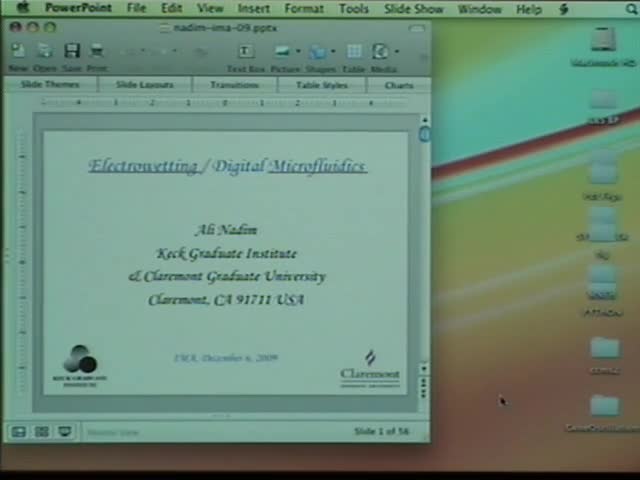Electrowetting and digital microfluidics
Presenter
December 6, 2009
Keywords:
- Maxwell equations
MSC:
- 35Q61
Abstract
In this tutorial, a number of approaches to mathematical modeling
of electrowetting-on-dielectric (EWOD), also known as digital
microfluidics (DMF) will be reviewed. EWOD refers to methods for
causing droplets to move along solid surfaces or changing the
shapes of attached drops (e.g., to actuate a liquid lens) by applying a
potential difference between the drop and an underlying electrode,
separated from the conducting drop via a thin dielectric layer.
The main equation describing electrowetting is known as the
Young-Lippmann (YL) equation, which provides a relationship between the
local contact angle of the drop and the square of the potential
difference. In this tutorial, a simple derivation of the YL equation
is provided based on an energy minimization principle. We will
then introduce both lumped and field models to characterize the
electrostatic forces acting on a drop as a function of its
position relative to the underlying electrodes. The lumped model
is based simply on treating the dielectric layer as a parallel-plate
capacitor and considering the changes in the energy of the system
as a function of the location of the drop. The field model requires
the use of concepts from electromechanics, including Maxwell's
electric stress tensor. We will consider both DC and AC electric
potentials and describe how to analyze the system in both cases.
